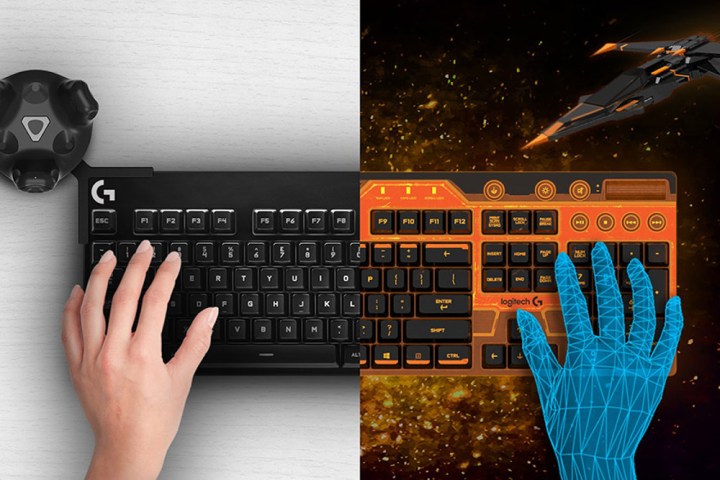
With a headset covering their eyes, even the most confident touch typist is going to have some issues using – or even finding – their keyboard. Thanks to the Logitech Bridge, though, that will no longer be a problem.
Bridge works with the Vive Tracker to render an accurately scaled, modeled, and tracked keyboard into a virtual environment, according to a report from Road to VR. It’s set to be built into SteamVR, to make it easy for developers to utilize the technology in their games and other experiences.
The Vive’s front-facing camera will be employed to track the user’s hand movements. This makes it possible to show an outline of their hands over the keyboard to give them a sense of their relative position.
Logitech is holding off on the wide-scale rollout of Bridge for the time being. From now until November 16, interested parties will be able to submit an application to be among the first wave of developers to get their hands on a beta version of the software development kit. Only 50 copies are set to be made available at this time, at a price of $150 – but there are plans to expand the program if it proves to be popular.
This kind of technology has the potential to expand upon the possibilities of VR. While most early content designed for headsets like the Vive has been game-like, there’s untapped potential for the more practical applications of a virtual environment.
For instance, imagine the ultimate distraction-free writing environment: a digital representation of your document that occupies your entire periphery, with nothing but a virtual keyboard sat in front of you to attract your gaze.
Flashy, fun software was an obvious priority when VR developers were trying to get people to invest in expensive hardware, but now that prices are dropping, we’re sure to see a wider range of experiences and applications – and easy-to-implement keyboard support will help foster that sort of content.


